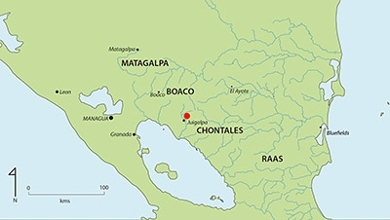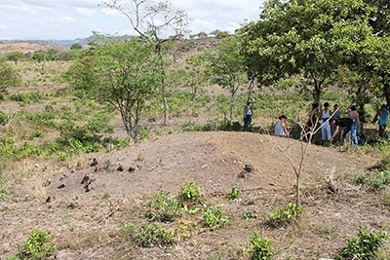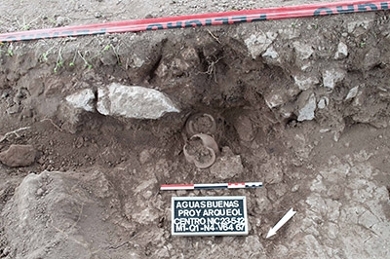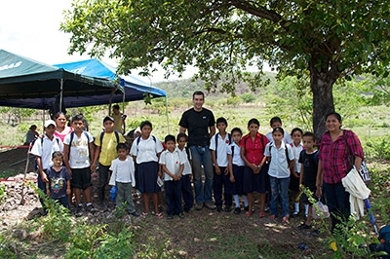Research project
Networked practices of contact
Cultural identity at the Late Prehistoric settlement of Aguas Buenas, Nicaragua, AD 500-1522
- Duration
- 2013 - 2019
- Contact
- Alexander Geurds

Research question
Explain how the entanglement of things and people affected cultural practices of self-identification at local levels, using central Nicaragua as a case study.
Research discription
In contrast to an increasingly interconnected present-day society, archaeology often outlines prehistoric pasts as consisting of bounded and traditional culture areas. As such, interaction in prehistory is often framed in economic and political terms. Recent advances in materiality and globalization studies, however, predict that the deep past was equally characterized by gradually developing, networked practices of contact. The research program draws on this novel body of theory to archaeologically question how people engaged with non-local things, in actively shaping their own cultural identities.
The research goal of this NWO Talent Scheme (VIDI) funded project is to explain how the entanglement of things and people affected cultural practices of self-identification at local levels, using central Nicaragua as a case study. Prehistoric central Nicaragua was a critical forum for the movement of people and things. Historical research and archaeological surveying have shown this area to be an intense contact zone. Theories of networked practices of contact, however, can only be developed through chronologically controlled contextual data at sites with long occupational histories. Projected for excavation therefore is the Aguas Buenas site documented in 2011. This site appears to be the single-most extensive and complex pre-Hispanic site known in Nicaragua (Figure 2,3).


The research team will apply a multidisciplinary approach, combining archaeological and archaeometric methods to: (1) Empirically establish the provenience of documented material culture; (2) Empirically assess the contexts of non-local objects; and finally (3) Identify mechanisms of object circulation and their relation to how object meaning and value were translated at the local and regional level (Figure 4). Deepening and broadening the preceding Leiden research in central Nicaragua, the proposed focus is on remodeling our understanding of prehistoric cultural geography as one consisting of connections rather than boundaries. I thereby connect to debates in the humanities and social sciences that regard the response of local communities to globalizing forces (Figure 5).


